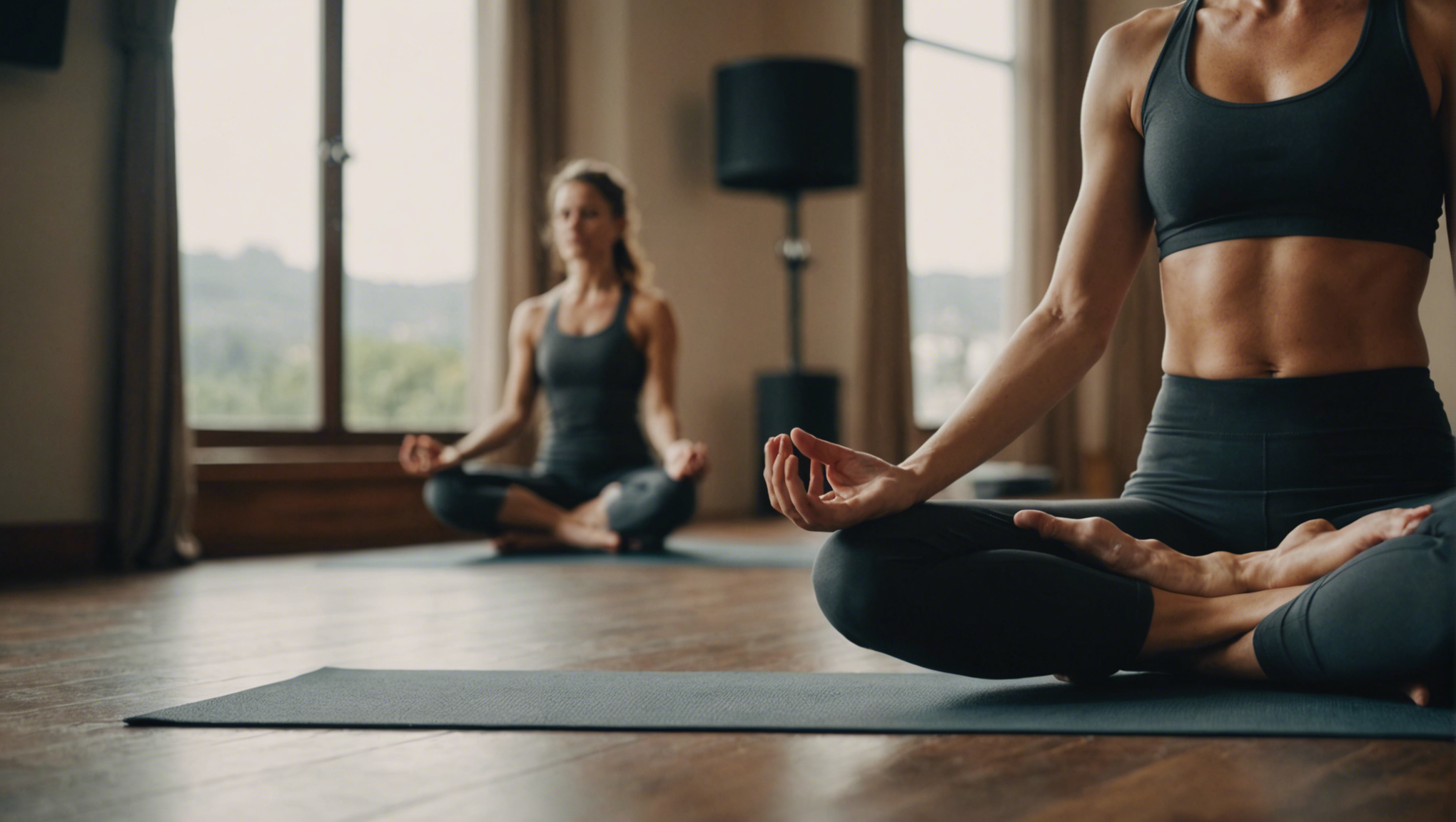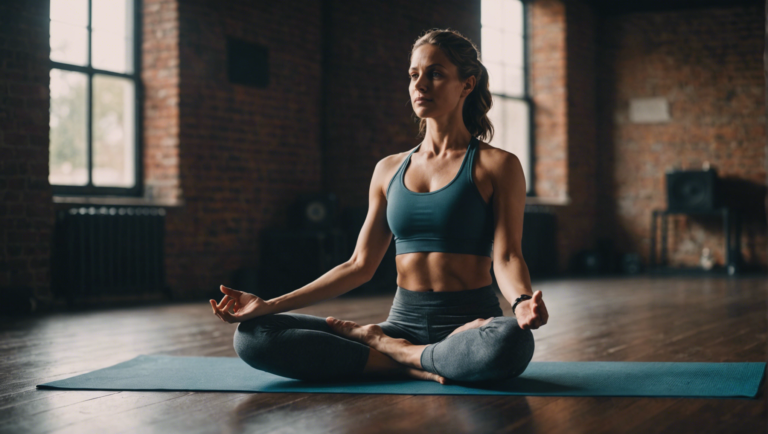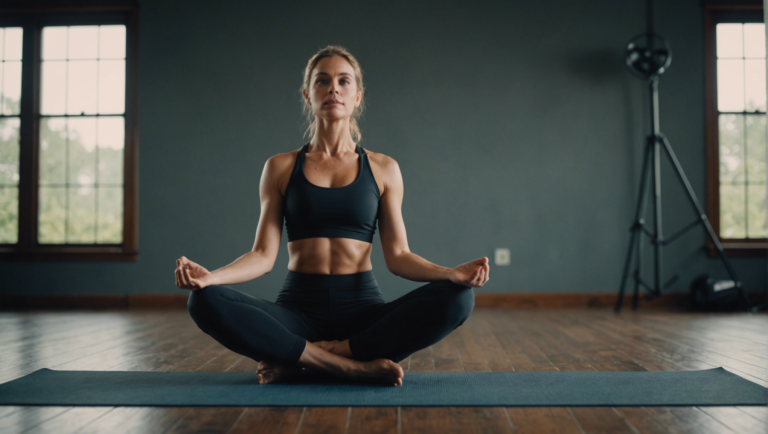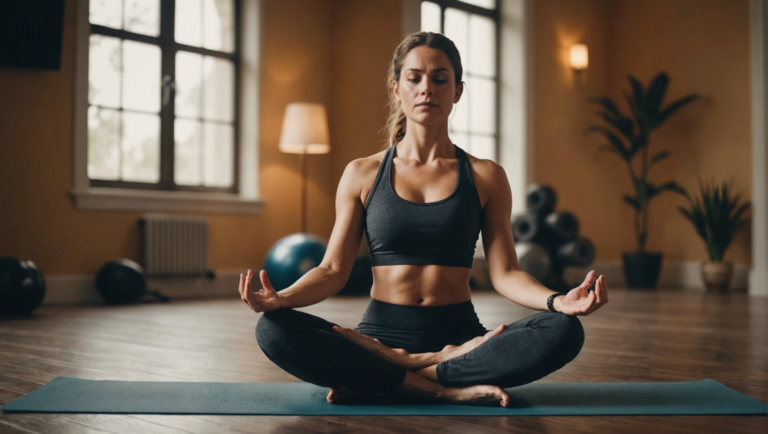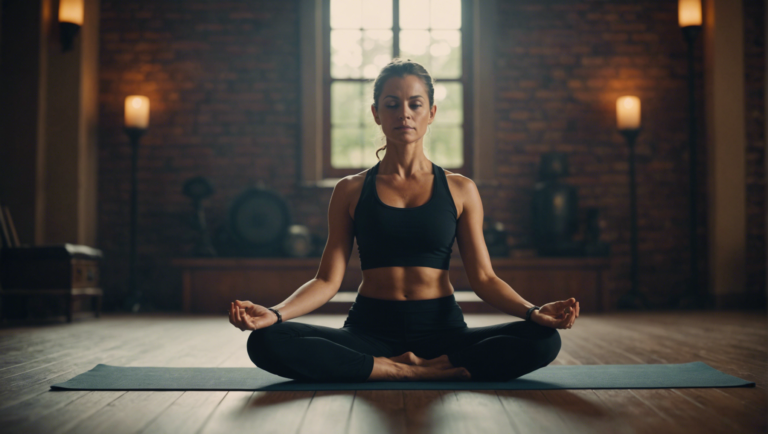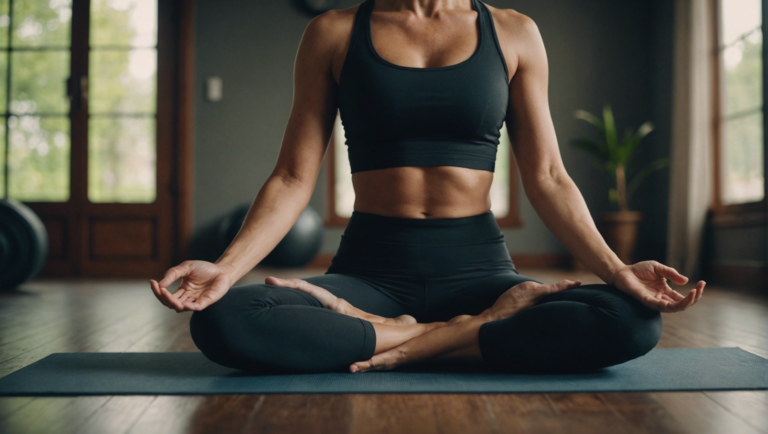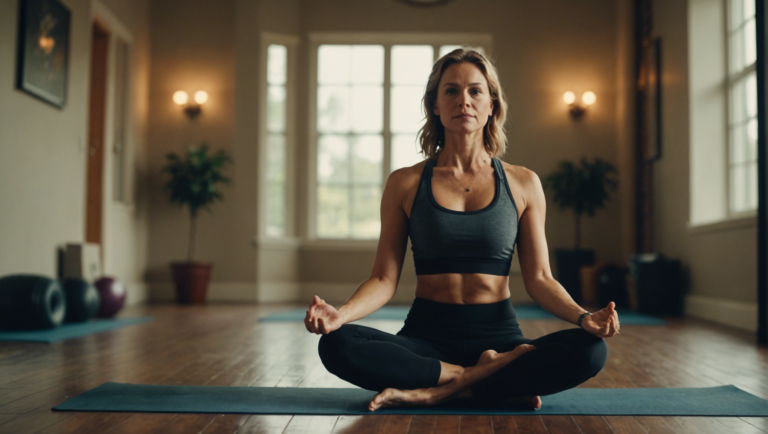How Much Yoga Should You Incorporate Into Your Weekly Routine?
Determining the Optimal Frequency of Yoga in Your Weekly Routine
Unraveling the Ideal Yoga Frequency for Holistic Well-being
The quest for optimal wellness and balance often leads one to explore various fitness regimes, among which yoga emerges as a beacon of holistic health. Yoga, with its ancient roots and multifaceted benefits, extends beyond physical exercise, touching upon mental tranquility, emotional balance, and spiritual insight. The frequency of yoga practice within a week, therefore, is not merely a question of scheduling but a profound consideration of personal goals, lifestyle, and the specifics of one’s physical and emotional landscape.
Personal Goals and Yoga Practice Intensity
Before charting out the frequency of yoga sessions, it’s imperative to reflect upon your personal objectives. Are you turning to yoga for flexibility, strength, stress reduction, or a blend of these benefits? For beginners aiming to acquaint themselves with yoga’s nuances, a thrice-weekly practice offers a solid foundation without overwhelming the body or mind. Such a schedule allows for days of rest and recovery, which is crucial for muscles adapting to new stretches and poses.
Conversely, more experienced practitioners or those with specific goals such as significant weight loss or mastering advanced yoga poses might find value in a daily practice. This might include a mix of intense sessions and more restorative practices, balancing effort with rejuvenation.
Yoga Variation and Weekly Scheduling
The beauty of yoga lies in its diversity, encompassing various styles from the vigorous Vinyasa to the deeply calming Yin Yoga. Integrating different types within your weekly routine not only prevents monotony but addresses multiple aspects of health. For instance, you might dedicate two days to Power Yoga for strength and cardiovascular health, two days for Hatha Yoga to refine posture and flexibility, and one day for Restorative Yoga to foster deep relaxation.
Such a varied approach ensures a holistic workout, touching upon flexibility, muscle strength, and mental wellness, thus making the overall practice more fulfilling and balanced.
Listening to Your Body’s Wisdom
An underrated yet vital aspect of determining your yoga schedule is attuning to your body’s cues. Yoga teaches us to cultivate awareness and listen to our bodies, a principle that should guide our practice frequency. Some weeks, your body may crave more vigorous sessions, while at other times, gentle, restorative practices may be what you need. Allowing for this flexibility in your routine honors yoga’s core philosophy of harmony and balance.
The Role of Lifestyle Factors in Determining Yoga Frequency
Lifestyle factors such as work schedule, family commitments, and leisure activities play a significant role in how much yoga you can realistically incorporate into your week. A pragmatic approach involves examining your weekly calendar and identifying slots where yoga can seamlessly fit without causing stress or overcommitment. It might mean shorter, daily practices for someone with a packed schedule, while another individual might prefer longer sessions spread out through the week.
Cultivating a Sustainable Yoga Journey
Embarking on or maintaining a yoga practice is akin to nurturing a relationship; it thrives on consistency, patience, and attentiveness. Whether you settle on three times a week or aspire for daily practice, the key to a sustainable yoga journey lies in regularity. Even on days when a full session seems daunting, a few minutes of mindful stretching or meditation can sustain the momentum of your practice.
Yoga, in its essence, is a personal and introspective journey tailored to one’s unique path towards wellness. While guidelines suggest anywhere from three to six times a week as ideal for most individuals, your optimal frequency hinges on a confluence of personal goals, physical readiness, mental requirement, and the flowing currents of everyday life. Embracing yoga as a flexible, responsive practice can unlock its deepest benefits, crafting a pathway to holistic health that resonates with your inner rhythm and life’s ever-changing melody.
Tailoring Your Yoga Practice to Fit Your Lifestyle and Goals
Yoga is a transformative practice, offering benefits for both mind and body, but with an array of styles and approaches, crafting a personal yoga routine that aligns with your lifestyle and aspirations can be a daunting task. Whether you’re a bustling professional, a meditation seeker, or an athlete looking to enhance flexibility and strength, tailoring your yoga practice is essential for it to be sustainable and beneficial in the long term.
Discovering Personal Goals and Preferences
One of the initial steps toward customizing your yoga practice is to define your goals. Are you aiming for improved flexibility, enhanced mental clarity, stress reduction, or all the above? Knowing what you want out of your yoga journey helps in selecting styles that complement these objectives.
From the vigorous movements of Vinyasa to the meditative stillness of Yin, each style offers unique benefits. Experimenting with different classes can provide insights into what best suits your temperament and physical needs. Online platforms and local studios often offer introductory courses, making this exploration accessible.
Aligning Practice with Daily Life
A common misconception is that significant time investments are necessary for yoga to be effective. However, even short, daily sessions can yield impactful results. For those with packed schedules, integrating yoga into the morning or evening routine for just 15-20 minutes can enhance flexibility, relieve stress, and improve overall wellbeing.
It’s also worth considering how yoga can complement other physical activities. For athletes, styles like Ashtanga or Power Yoga can serve as powerful cross-training tools to build strength and stamina. Conversely, slower-paced practices like Hatha can aid in recovery and injury prevention.
Setting a Realistic Routine
Sustainability is key. A routine that feels like a chore is unlikely to last. Start with a manageable commitment; perhaps a few times a week, then gradually increase frequency as yoga becomes a natural part of your lifestyle. Listen to your body and adjust your practice accordingly—there will be days when a gentle session is more beneficial than a strenuous workout.
Creating a designated space at home for yoga can also enhance your practice. A calming, dedicated area signals to your mind that it’s time to focus inward and practice, making it easier to stay consistent.
Monitoring Progress and Adjustments
As with any physical activity, progress in yoga is nuanced and individual. Celebrate milestones like mastering a new pose, noticing increased flexibility, or experiencing enhanced mental clarity. Keep a yoga journal to document these moments, reflecting on the evolution of your practice and its impact on your life.
Be open to refining your routine. What works for you now may change as you grow in your practice. Periodically reassess your goals and adjust your yoga style, the length of practice, and frequency accordingly. Embracing this flexibility ensures your routine remains aligned with your evolving needs and aspirations.
Seeking Guidance and Community
Yoga is a deeply personal journey, yet seeking the guidance of experienced instructors and connecting with a community of fellow practitioners can enrich your practice. Instructors can offer personalized advice to refine your technique and suggest modifications to suit your level of experience and physical condition. Participating in workshops or yoga retreats introduces new perspectives and techniques, deepening your understanding and appreciation of the practice.
Communities, whether online or in-person, provide a supportive environment to share experiences, challenges, and achievements, fostering a sense of belonging and motivation.
Tailoring your yoga practice to fit your lifestyle and goals ensures it remains a rewarding, integral part of your daily routine. By setting clear intentions, being realistic about your time, and staying open to adjustments, you create a sustainable practice that supports your physical and mental well-being, encouraging personal growth and resilience.
The Impact of Yoga on Physical and Mental Health: How Much is Needed?
Yoga is more than just a series of poses; it’s a comprehensive system that influences every facet of wellness. Balancing the body and mind, yoga has been practiced for centuries across the globe. But, in our high-speed digital era, the query emerges: Just how much yoga is necessary to significantly impact physical and mental health? Let’s unfold this puzzle, drawing upon research, expert insights, and principles rooted in tradition to guide individuals on a transformative journey toward holistic well-being.
The Optimal Duration for Yoga Practice
The frequency and duration of yoga practice can vary dramatically from one individual to another, influenced by goals, lifestyle, and physical capabilities. Traditionally, daily practice is recommended, with sessions ranging from a few minutes to several hours. However, modern lifestyles may not always accommodate extended periods of yoga. Researchers suggest that even shorter, consistent practices can offer profound health benefits. Engaging in yoga for as little as 15–30 minutes daily can improve flexibility, strength, and mental clarity.
Yoga’s Multidimensional Benefits for Physical Health
Yoga’s influence extends across the entire spectrum of physical health, offering more than just improved flexibility. It strengthens muscles, supports spinal alignment, and enhances cardiovascular health. Regular engagement in yoga poses reduces the risk of chronic diseases such as hypertension and type 2 diabetes. The rhythmic breathing techniques intrinsic to yoga practices also enhance lung capacity and respiratory efficiency. Recognizing these benefits requires an acknowledgment of the dedication to regular practice, reinforcing the principle that consistency trumps duration.
Enhancing Mental Well-Being Through Yoga
Beyond the physical, yoga offers a sanctuary for mental rejuvenation and emotional balance. The mindfulness and meditation aspects of yoga cultivate a heightened sense of present-moment awareness, significantly reducing symptoms of anxiety and depression. By fostering a profound connection between the mind, body, and breath, yoga equips practitioners with the resilience to navigate life’s stresses more effectively. Integrating even a short daily practice into one’s routine can serve as a powerful antidote to the chaos of modern living, promoting peace and mental clarity.
Tailoring Yoga Practice to Individual Needs
Embarking on a yoga journey is highly personal, and there is no one-size-fits-all prescription. Some may find solace in the gentle flow of Hatha yoga, while others might thrive in the dynamic sequences of Vinyasa. The key is to listen to your body and respect its limits while gradually pushing toward growth. yoga into your week effectively means finding a balance that aligns with your physical health, mental well-being, and overall lifestyle goals. Engaging with a knowledgeable instructor can further personalize this experience, ensuring that the practice enriches rather than overwhelms.
Building a Consistent Yoga Routine
Establishing a consistent yoga practice is foundational to reaping its myriad benefits. Starting with shorter durations and incrementally increasing as comfort and capability expand can foster a sustainable habit. Integrating yoga into the daily routine, much like brushing teeth or eating meals, can transform it from a task to an integral part of one’s wellness regimen. Patience and persistence are key, as the benefits of yoga unfold over time, revealing a deeper connection to oneself and enhanced quality of life.
Yoga, with its holistic approach, embraces the individual’s journey toward wellness, advocating for a balanced practice that nurtures both the body and mind. It’s not merely about how long or intensely one practices, but rather the consistency, intention, and mindfulness brought to each session. Whether through a few minutes of morning stretches or an hour-long class, the essence of yoga lies in its regular integration into daily life, promising a pathway to enhanced physical and mental health.
Balancing Intensity and Rest in Your Yoga Schedule
Finding the perfect equilibrium between exerting your body and allowing it time to rest can enhance your yoga practice, advance your physical goals, and support your emotional well-being. Yoga, an ancient discipline that harmonizes body, mind, and spirit, offers a wide array of styles ranging from the gentle and restorative to the intensely physical. Understanding and respecting your body’s need for balance between these two poles is key. This article delves into strategies to achieve an optimal mix of intensity and rest in your yoga routine.
Cultivating a Personalized Yoga Practice
Every individual’s body is unique, necessitating a personalized approach to yoga. Instead of blindly following the most popular trends, focus on what your body needs. Some days, this might be a vigorous Vinyasa flow to energize and strengthen, while other days, it might require a Yin or Restorative class to relax and heal. Listening to your body’s subtle signals is crucial. If you feel energized and strong, pursue a more challenging sequence. Conversely, if you’re feeling drained or sore, choose a practice that prioritizes restoration.
Understanding the Benefits of Varied Yoga Intensity
A balanced yoga schedule should not only focus on the physical aspects but also consider mental and emotional benefits. High-intensity practices like Ashtanga or Power Yoga can improve cardiovascular health, build strength, and enhance stamina. On the other hand, gentler practices such as Hatha or Iyengar Yoga can reduce stress, improve flexibility, and encourage mental clarity. Integrating a mix of these styles can provide a holistic health benefit, ensuring that you are not neglecting any aspect of your well-being.
Prioritizing Rest and Recovery
In the pursuit of physical achievements, it’s easy to overlook the importance of rest. However, recovery is just as critical as the practice itself. rest days into your schedule allows your muscles to repair, prevents burnout, and supports growth in your practice. Additionally, active rest days, where you might engage in gentle stretching or meditative practices, can enhance your recovery process by keeping the body moving without adding stress.
Listening to Your Body
The most advanced yogis know that true progress lies in attunement with one’s own body. Pay attention to signs of fatigue, soreness, or emotional drain. These indicators can guide you to slow down and opt for a restorative practice. Equally, feelings of restlessness or excess energy can signal it’s time to challenge yourself with more intense sessions. This intuitive approach ensures your practice is both sustainable and beneficial.
Scheduling for Balance
Crafting a balanced weekly yoga schedule requires intention and awareness. A common recommendation is to aim for a mix that reflects your current physical and emotional needs. For instance, you might decide on three days of vigorous practice, two days of moderate practice, and two days of restorative or no practice. Adjusting this distribution according to how you feel each week can help maintain the balance between pushing your limits and nurturing your body.
Embracing Fluidity in Your Practice
Flexibility in your yoga routine is vital. While having a schedule can provide structure and consistency, allowing for adjustments based on your day-to-day condition is crucial for maintaining balance. This fluidity prevents monotony in your practice and keeps your body and mind engaged in every session.
Balancing the intensity of your yoga practice with adequate rest is not about adhering strictly to a regimen. It’s about developing a deep, intuitive connection with your body and allowing that awareness to guide your practice. This approach not only fosters physical strength and flexibility but also cultivates mental resilience and emotional tranquility. As you embark on or continue your yoga journey, remember that the ultimate goal is not mastering the most complex poses but achieving harmony within yourself.
Beyond the Mat: Incorporating Yoga Principles into Daily Life
Yoga extends far beyond the physical asanas practiced on the mat. It is a holistic approach that integrates physical, mental, and spiritual disciplines to achieve a harmonious state of being. By weaving yoga principles into the fabric of daily life, one can cultivate a more mindful, compassionate, and balanced existence. This exploration delves into the transformative power of integrating yoga’s philosophy into everyday routines.
Embracing Mindfulness and Presence
The essence of yoga is rooted in mindfulness—being fully present in the moment. In the hustle of modern life, it’s easy to become ensnared in the past or anxious about the future. Adopting a yoga mindset encourages one to anchor themselves in the now, fostering a heightened state of awareness that enriches every experience.
Mindfulness can be practised through simple acts like savoring a meal, truly listening to a friend without distraction, or observing the intricate details of the natural world. The key is to engage fully with the present task or experience, bringing about a sense of peace and contentment that transcends the need for external validation or material success.
Cultivating Compassion and Empathy
Yoga teaches us that all living beings are interconnected. This understanding nurtures empathy and compassion, not only towards others but also towards oneself. In daily life, this might manifest as being kinder in our judgments, more patient in our interactions, and more forgiving of our own flaws and mistakes.
The practice of Ahimsa, or non-violence, is paramount in yoga philosophy. This extends beyond physical harm to include thoughts and words. By practicing kindness in our inner dialogue and in our communication with others, we can create a more nurturing environment for ourselves and those around us.
Practicing Gratitude and Contentment
Santosha, or contentment, is another vital principle in yoga. It invites us to find satisfaction in what we have, rather than being perpetually caught in a cycle of desire and dissatisfaction. A daily gratitude practice can help illuminate the abundance already present in our lives, shifting our focus from what we lack to what we possess.
Begin or end each day by mentally listing or jotting down a few things for which you’re grateful. This simple practice can significantly shift one’s perspective, fostering a more joyful and appreciative approach to life.
Living with Purpose and Intention
Yoga encourages us to live deliberately, with a clear sense of purpose and intention. Each action, no matter how small, is imbued with significance when performed mindfully and with a clear goal in mind. This approach not only makes our actions more effective but also imbues our lives with more meaning and direction.
Consider setting intentions for the day each morning, aligning your actions with your core values and long-term goals. This clarity of purpose ensures that even the most mundane tasks are steps on the path toward fulfilling your potential and contributing positively to the world.
Nurturing a Strong Mind-Body Connection
Yoga is renowned for its ability to fortify the connection between mind and body. This synergy enhances one’s intuition and self-awareness, allowing for more informed and healthful choices concerning diet, exercise, and self-care.
Listen to your body’s cues and honor its needs, whether that means taking a break when you’re stressed, choosing nourishing foods, or engaging in physical activities that you genuinely enjoy. This respectful partnership with your body can lead to lasting health and vitality.
Through the conscientious application of yoga principles in everyday life, we can profoundly transform our experience of the world. This journey is not about perfection but about progress—step by step, breath by breath. It’s an invitation to live more fully, with greater joy, compassion, and purpose, both on and off the mat.
Conclusion
Finding the right balance and intensity for yoga within your weekly routine is not just about allocating time for physical postures but also integrating the philosophies and practices of yoga into your daily life for a holistic improvement of both mental and physical health.
Diving Deep into the Ideal Yoga Schedule
The journey begins with determining the optimal frequency of yoga practice that harmonizes with personal schedules and physical capabilities. There isn’t a one-size-fits-all answer, but the consensus among seasoned practitioners and health experts leans towards a practice that fosters consistency over intensity. For some, this might translate to shorter daily sessions, while for others, longer sessions a few times a week may be more practical and beneficial. The key is to listen to your body and adjust accordingly, acknowledging that as your yoga practice deepens, so too will your understanding of what your body and mind need.
Crafting a Yoga Routine That Reflects Your Aspirations
Equally important is tailoring your yoga practice to align with your personal goals and lifestyle. Whether you’re seeking stress relief, physical strength, flexibility, spiritual growth, or a combination of these, your yoga routine should be a reflection of these goals. The beauty of yoga lies in its diversity, offering a wide range of styles and intensities to match any objective or experience level. From the calming flows of Yin Yoga to the physically demanding poses of Ashtanga, there’s a style to suit every need and aspiration.
Quantifying the Benefits of Yoga on Well-being
When exploring the impact of yoga on health, both mental and physical, it becomes evident that consistency trumps quantity. Regular practice, even if it’s just a few minutes a day, can lead to significant improvements in stress reduction, flexibility, posture, heart health, and overall well-being. Studies have shown that the benefits of yoga, including reduced anxiety and improved mental health, can be experienced with just a few sessions per week. The practice encourages mindfulness and stress management techniques that can alleviate symptoms of depression and anxiety, making yoga a powerful tool for mental health.
The Synergy of Effort and Ease
Understanding the importance of balancing intensity with rest in your yoga schedule is critical to prevent burnout and injuries. Yoga teaches the principle of Ahimsa, non-harming, which applies not only in our interactions with others but also in how we treat our own bodies. Integrating restorative practices and allowing for adequate rest days are essential components of a sustainable yoga routine. These principles help foster a respectful and nurturing relationship with our bodies, encouraging growth and healing.
Extending Yoga Beyond Physical Practice
Perhaps the most transformative aspect of a dedicated yoga practice is the seamless integration of its principles into daily life. Yoga is more than just the time spent on the mat; it’s a way of being that extends into every moment of our lives. The disciplines of mindfulness, gratitude, and presence cultivated through yoga can profoundly influence our interactions, decisions, and overall outlook on life. Embracing these principles outside of practice enriches the experience, turning every breath, movement, and decision into a form of yoga.
The Path Forward
Embarking on a yoga journey is a deeply personal and evolving process that enriches lives in myriad ways. By tuning into their bodies and minds, individuals can craft a yoga practice that not only meets their physical and mental health needs but also supports their overall growth and wellbeing. The essence of yoga lies in the balance—between action and rest, giving and receiving, striving and surrendering. This balance enables practitioners to live more fully, with greater awareness, health, and harmony. With each posture, breath, and moment of mindfulness, yoga offers an opportunity to explore the depths of our beings, inviting us to live with purpose, grace, and joy.
